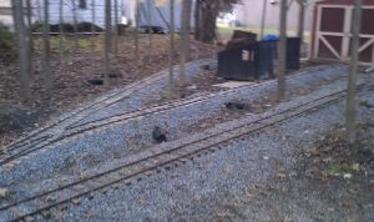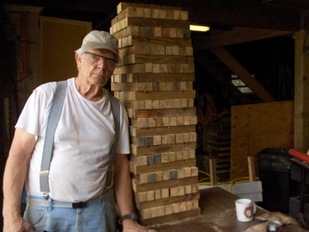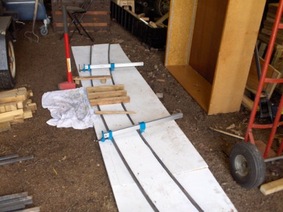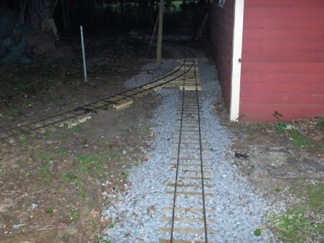
The Track
This project was started in the summer of 2008 and is still not completed. 5000 railroad ties later and 3000 ft of rail there is still plans for more expansion. I spent a lot of time considering different methods for building track. There are actually a few. I will never fall into the debate of which method is best but will debate there is a best method for each person. The method I decided on was called groovy track. This method involves using railroad ties with grooves cut in them and the rail is pressed or hammered into the slot. Once in the slot the rail does not move and needs no hardware to hold it together. There is lots of info and debate on this type of track pros and cons on lots of other websites so I am not going to go into it here.



The first thing was to get some treated lumber and cut some railroad ties. They are basically 2x2x13 and I bought the lumber from the lumber stores pile of warped boards. They end up being at least 50% off and when cut up work great. Pictured here is dad after a days work of cutting railroad ties. After the ties were cut we then used a dado blade on the ties to cut the grooves.

For rails we used 3/8x1 hot rolled flat bar steel. It is cheap and readily available at our local steel supplier. For curves we had to pre-bend the steel with a steel bender we bought from harbor freight. Then we built a jig out of plywood to keep all the curves consistent. For wide radius curves it is not necessary to pre-bend the rail but our curves are 20' radius.

Here is me after finishing a 20 foot piece of curved track. The next step is to prepare the land. Because the flatter is better for trains you really need to act like a real surveyor. I used stakes and laser levels to mark out my track and determine the rise and fall of the land. After that it was time to dig where needed and build up where needed.

A lot of people helped me with the moving of dirt and gravel but nobody more than my cousin Matt. Here he is ballasting some track. If you take any advice form me take this; consider your drainage. The more you take water out of play the better off your railroad will be. Also use any call before you dig services. We put a pick axe right through a drainage line that came from the house through the yard, who knew. That was a pain to dig up and fix.

After its all said and done, you get a nice looking track system that will last and be functional. I'll talk about turnouts in another project.